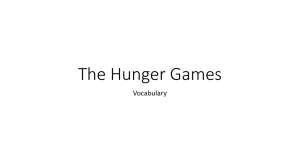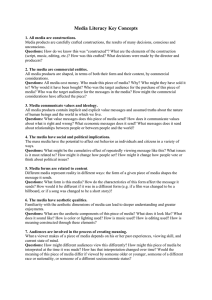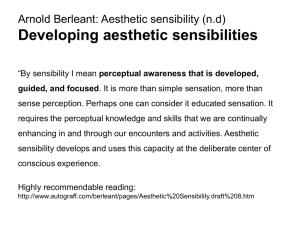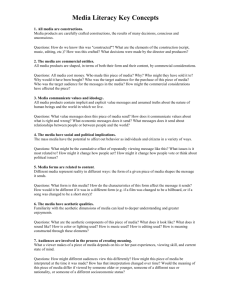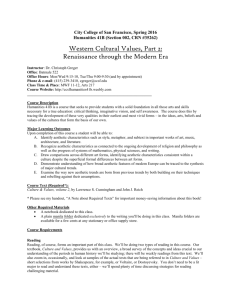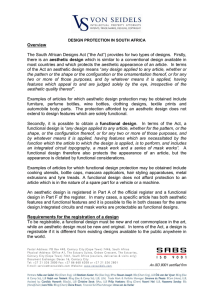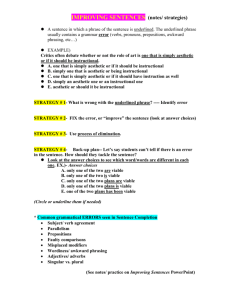Aesthetic Development & Creative Expression in Children
advertisement
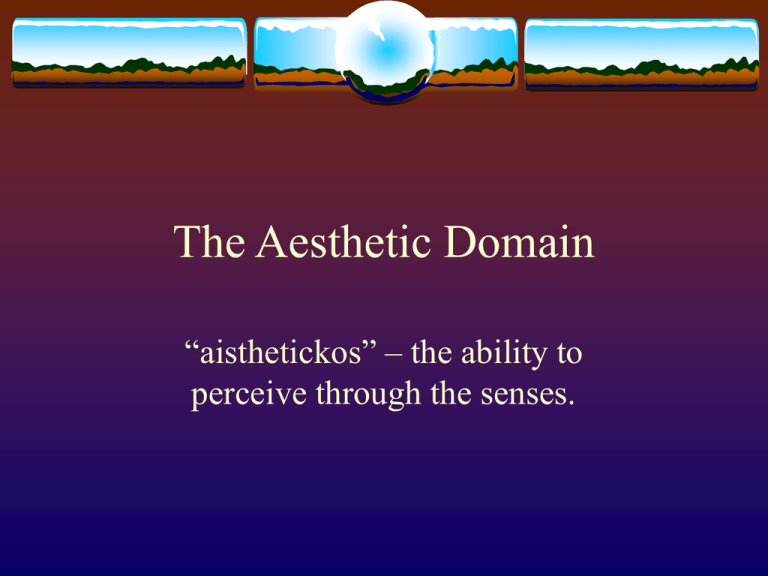
The Aesthetic Domain “aisthetickos” – the ability to perceive through the senses. AESTHETIC DEVELOPMENT RESPONSIVE EXPERIENCES – appreciation of natural beauty Exposure Activities –appreciation of arts Discovery Activities Evaluation Activities –forming judgments and preferences PRODUCTIVE EXPERIENCES Creative Activities –creative expression Stages of Creative Representation 2-4 Scribble – disordered, controlled, and naming scribbles Age Age 4-7 Representational Preschematic – symbols 7-9 Schematic – highly individualized visual symbols Age Teaching Strategies for Quality Aesthetic Experiences Model aesthetic awareness and enthusiasm. Prepare an aesthetics-friendly classroom environment. Organize an art center or “creation station” with appropriate materials. Select appropriate music supporting materials. Provide a variety of creative movement props. Teaching Strategies for Quality Aesthetic Experiences Provide props for dramatics. Value all aspects of the creative expression process. Teach children to respect and care for materials. Motivate creativity through a variety of strategies. Explore the materials before asking children to use them. Teaching Strategies for Quality Aesthetic Experiences Avoid making a product when demonstrating a technique. Involve children in music experiences daily. Provide a large uncluttered space for creative movement. Begin each movement experience with a similar routine warm-up and end with a similar cool down. Teaching Strategies for Quality Aesthetic Experiences Accept children’s own ideas for creative movement. Utilize the principle of developmental direction in aesthetic teaching. Discover and use picture book illustrations as works of art. Use questions to describe, analyze, evaluate art. Teaching Strategies for Quality Aesthetic Experiences Avoid reinforcing only a realistic approach. Involve ALL of the children in the arts. Variety of Strategies to Promote Creativity Direct hands-on time with materials Examples shown of quality art and beautiful craftsmanship Demonstrate new techniques. Use of motivational dialogue. Role-play idea. Show and discuss pictures of real objects. Encourage imagining. Use nonverbal reinforcement. Connect creative experiences to a concept Ideas for Unit Songs to teach literacy Poems, puppets, and fingerplays Use of musical instruments Field trips to museums Arts & Crafts Listen to taped stories Center-based activities Easel/paintings Guest speakers (artists in our town) Creating songs about topic Book-making experiences Murals Bulletin Boards
